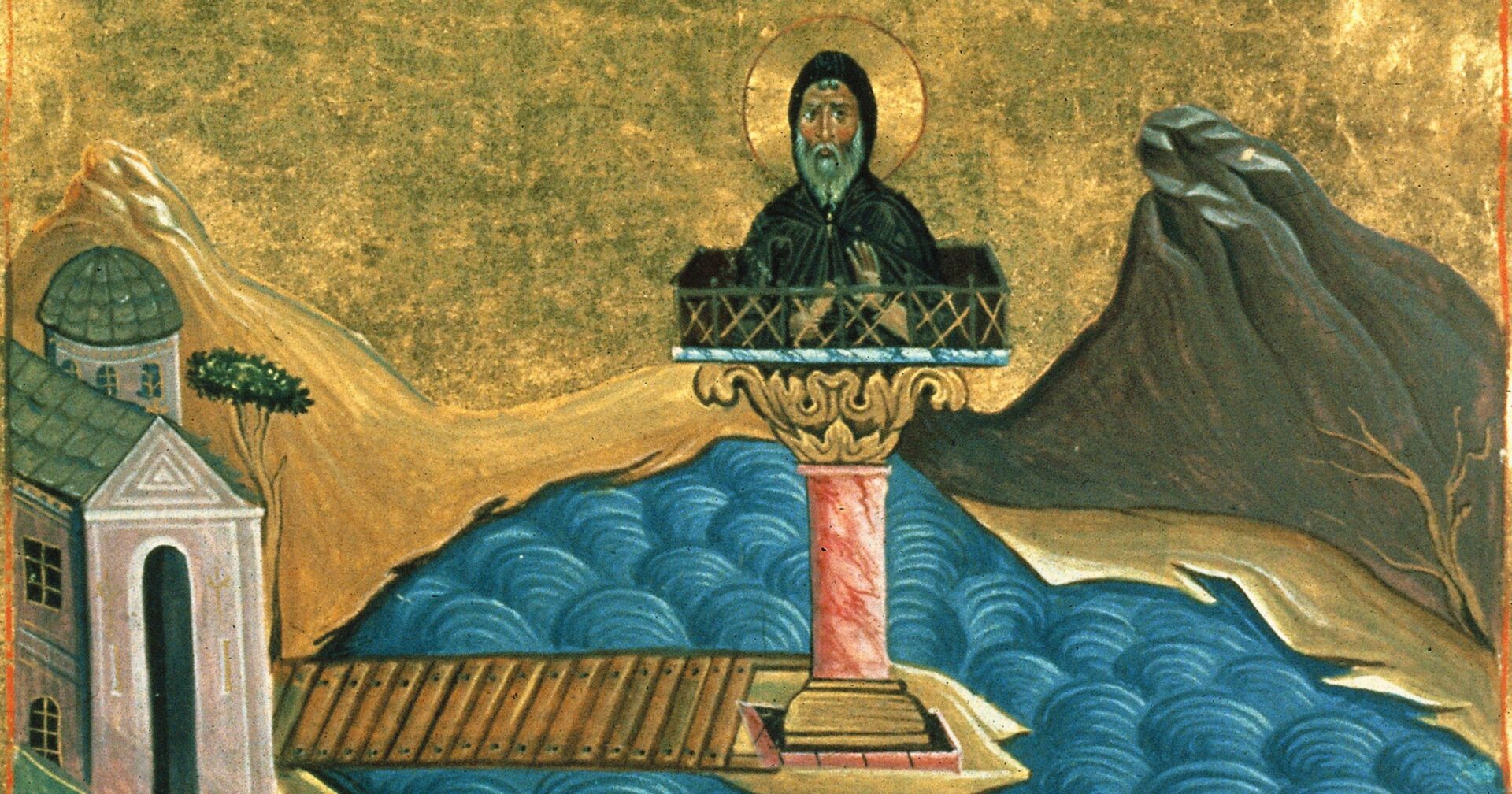Common in the early days of the Byzantine empire, stylites practiced a particular and intense form of asceticism: they would climb pillars and live a top them, preaching, fasting, praying, eating, sleeping, and eventually dying.
The first known practitioner of this particular form of asceticism was Saint Symeon the Sylite, who in 423 A.D. desired for more time for private austerities and refuge from the increasing number of people seeking his advice and prayers.
Discovering a pillar amongst ruins near Telanissa close to Aleppo in Syria, he formed a small platform at the top and determined he would live out his life there.
The History of the Decline and Fall of the Roman Empire describes a poignant account of his life:
“In this last and lofty station, the Syrian Anachoret resisted the heat of thirty summers, and the cold of as many winters. Habit and exercise instructed him to maintain his dangerous situation without fear or giddiness, and successively to assume the different postures of devotion. He sometimes prayed in an erect attitude, with his outstretched arms in the figure of a cross, but his most familiar practice was that of bending his meagre skeleton from the forehead to the feet; and a curious spectator, after numbering twelve hundred and forty-four repetitions, at length desisted from the endless account. The progress of an ulcer in his thigh might shorten, but it could not disturb, this celestial life; and the patient Hermit expired, without descending from his column.”
Saint Symeon’s own example attracted many others to take up the life of a stylite to varying degrees of success, the most well known of which is Saint Luke the Younger who lived on Mount Olympus in the 10th century and was also one of the earliest saints to be seen levitating during prayer.
Another well known example is Saint Daniel the Stylite, who’s spiritual mentor was Saint Symeon himself. Saint Daniel lived atop his pillar for 33 years after being blessed by Saint Symon and receiving his cowl.
“Stylitism” never made its way into the West as a popular form of asceticism, although some continued the practice in the East into the 12th century.
In the Russian Orthodox Church, the practice continued until 1461, and among the Ruthenians it continued for some time later.
Today, the practice is practically extinct, although some practice less strict forms where they come down from their pillars a limited number of times a week.
Photo credit: Public Domain via Wikimedia Commons














